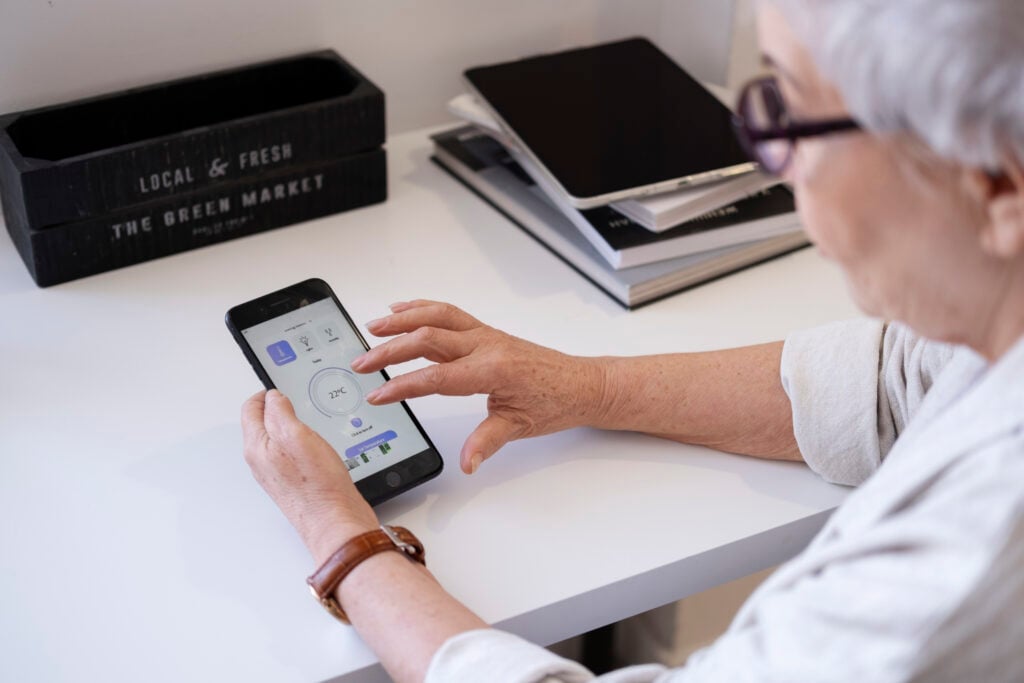Artificial Intelligence (AI) is revolutionising accessibility in mobile apps, turning obstacles into opportunities for innovation. With over one billion people worldwide living with some form of disability, the demand for inclusive design has never been greater.
At Sonin, we believe in building the right product—one that impacts every user. By leveraging AI and data-driven insights, we help businesses design inclusive apps that not only meet accessibility standards but also create seamless, engaging experiences for all.
This blog will explore how AI enhances accessibility, the challenges developers face, and how Sonin can help you create an inclusive and accessible app.
Why Accessibility Matters in the Digital Age
Accessibility is not just a compliance requirement – it’s a competitive advantage. Ensuring your app is accessible expands your audience, builds brand and user loyalty, and drives sustainable business growth.
A well-designed, inclusive app doesn’t just serve users with disabilities—it improves the experience for everyone. Features like high-contrast interfaces, voice assistance, and adaptive user interface (UI) benefit users in diverse environments, whether permanent, temporary, or situational impairments. Consider someone using a screen reader due to vision loss and a commuter relying on voice commands while driving.
At Sonin, we build accessibility into every app’s core foundation. Through in-depth user and market research, reachability heatmaps, and rigorous usability testing, we ensure that your product is intuitive and functional for all users—right from the start.
How AI is Transforming Accessibility
AI is driving breakthroughs in accessibility, enabling more intelligent, more responsive user experiences. Key areas include:
- Voice Assistance & Natural Language Processing (NLP) – AI-powered voice recognition enables hands-free navigation, helping users with physical, visual and reading impairments engage effortlessly with mobile apps. Virtual assistants like Siri, Google Assistant, and Alexa are prime examples of how AI can make digital interactions more intuitive.
- AI-Powered Image Recognition – Apps like Microsoft’s Seeing AI leverage computer vision to describe surroundings, empowering visually impaired users with real-time audio descriptions of objects, people, and text.
- Text-to-Speech & Speech-to-Text – AI transcription tools bridge communication gaps, providing real-time subtitles and converting spoken language into text for individuals with hearing impairments.
- Adaptive User Interfaces (UI) – AI dynamically adjusts text size, contrast, and interface layouts based on user preferences, ensuring optimal readability and ease of navigation.
- Predictive Text & Autocomplete – AI enhances accessibility for users with cognitive or motor impairments by suggesting context-aware text predictions and simplifying written communication.
At Sonin, we integrate AI-powered accessibility features into every app, ensuring they align with user needs and your business objectives. We refine each element through an iterative design process based on real-world user feedback.

Real-World Applications of AI in Accessibility
AI is transforming mobile apps by enabling smarter, more adaptive accessibility features for users with disabilities. Several innovative solutions showcase how AI is driving this change.
- Be My Eyes – Originally a volunteer-based service, this app now leverages AI-powered object recognition and real-time assistance to support visually impaired users more independently.
- Google Maps – Uses AI to enhance voice-guided navigation with real-time route adjustments, personalised recommendations, and improved wheelchair-accessible route suggestions for a smarter, more inclusive travel experience.
- AVA – Uses AI-driven speech recognition to provide real-time, context-aware transcriptions, enhancing accessibility in group conversations and meetings for users with hearing impairments.
These examples highlight how AI isn’t just improving accessibility—it is empowering users by breaking down digital barriers. At Sonin, we integrate AI-driven accessibility testing into our development process, ensuring intuitive interfaces across various lighting conditions, devices, and assistive technologies.

Challenges in Implementing AI for Accessibility
While AI holds tremendous potential to enhance accessibility, several challenges arise when applying it to create inclusive experiences:
- Bias in AI Models – AI systems are only as effective as the data on which they are trained. Limited or non-diverse datasets can lead to biased outputs, potentially excluding certain users from accessibility features and reducing their effectiveness.
- High Development Costs – Implementing AI-driven accessibility solutions requires significant research, development, and infrastructure investment. However, the long-term benefits—such as increased inclusivity and improved user experience—far outweigh the initial costs.
- Privacy Concerns – Many AI-driven accessibility features rely on processing sensitive personal data, including voice commands, facial recognition, and behaviour patterns. To foster user trust and comply with privacy regulations, strong safeguards must be established to protect this data from misuse.
The Future of AI and Accessibility
For many, the next evolution in digital accessibility lies at the intersection of AI, wearable devices, and augmented reality (AR) – technologies that continuously adapt to user needs.
- AI-Integrated Wearable Devices – Smart glasses with AI-powered object recognition can provide real-time audio descriptions of surroundings, enhancing independence for visually impaired users.
- Augmented Reality (AR) – AR overlays digital information onto the real world, offering features such as audio-based pathfinding or obstacle detection to assist users with mobility impairments in navigating unfamiliar spaces.
- Machine Learning for Continuous Improvement – AI-driven accessibility features continuously learn from user interactions, refining their responses to better anticipate user needs and adapt to real-time conditions.
Let’s Build the Right Product, Together
At Sonin, we know accessibility is a core design principle. That’s why we help you create inclusive, user-friendly experiences that reach a wider audience while driving real business impact.
Through Discovery Workshops, we work closely with your team to identify user personas, uncover accessibility barriers, and develop innovative solutions. Our Design Sprints focus on rapid iteration and real-user testing, ensuring your app meets and exceeds accessibility standards.
Inclusive design is not just good practice—it’s good business. Let’s build the right product together. Talk to us today.